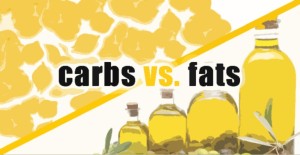Should You Supply Dietary Energy as Oil or Carbohydrates?

The importance of dietary energy in formulating cost-effective, high-performing diets is a topic I have covered in the past. Nutritionists usually have some ingredient options in order to get the most performance, with economy in mind, out of production animals. The overall goal is always the same – supply just enough total calories in the diet to maximize some response (growth, production of meat, milk, eggs, etc.), but not more, in order to maximize efficiency.
Energy is typically supplied as carbohydrates – usually starch from cereal grains, like corn – and as fats and oils, such as vegetable oil (like soybean oil). The economics of the ingredient choices, and that fact that fats and oils have, on average, 2.25 times the energy of carbohydrates, dictate what ultimately comprises a complete diet.
On the surface, supplying the desired level of calories in a complete diet is all that matters. Where the calories come from – carbohydrates vs. fats – is often considered irrelevant. However, the findings of a recent study show that this is not so simple. Interestingly, the authors downplay their own findings, but as I outline here, I don’t necessarily agree.
The authors located a single, homogenous source of corn, and ground it to 4 different particle sizes. They then determined that, as particle size decreased (became finer), metabolizable energy for swine increased. Simply put, the pigs were able to extract a little more energy (121 kilocalories/kg for the particle sizes used in this study) from the corn as it was more finely ground. This finding was expected.
The authors then formulated commercial diets with equal total energy using the corn with different particle sizes, and adding soybean oil to the diets with larger corn particle sizes to maintain the same energy content. Since the larger-particle-sized corn diets were determined to have less metabolizable energy, the soy oil made up the difference. So, we have a situation here where the total dietary energy supplied to the pigs was equal, but the calories came from different amounts of carbohydrates and fats (soy oil, in this case). So, how did the pigs perform?
I only show statistically significant data here, but others followed this trend – increasing the energy from soy oil reduced average daily feed intake in the pigs. This could be alarming except when you look at the feed efficiency (pig weight gain relative to feed intake) data.
Feed efficiency was significantly enhanced with the inclusion of more energy as soy oil. Remember, conventional wisdom says that that you simply need to supply adequate calories.
What is demonstrated here is why it’s so important to evaluate animal data, and not only information from the lab (which is also important). Fats and oils cause effects in the intestine that enhance nutrient digestibility, even as the flows of nutrients through the intestine are fairly constant, and even with wide variations in dietary energy level and consumption (as I showed years ago; see here and here for data and discussion). So, energy supplied as soy oil has different, beneficial effects when compared to energy supplied as starch (mainly) in finely-ground corn.
Practically speaking, ExPress® soy meal, produced with high-shear extruders and mechanical oil presses from Insta-Pro International, has more soy oil remaining in the meal versus solvent-extracted, commodity soybean meal. As a result, diets formulated to contain ExPress® soy meal, in place of solvent-extracted soybean meal, will contain more soy oil. This is part of the reason why ExPress® soy meal has been repeatedly shown to be superior to commodity soybean meal (see here, here, and here).





